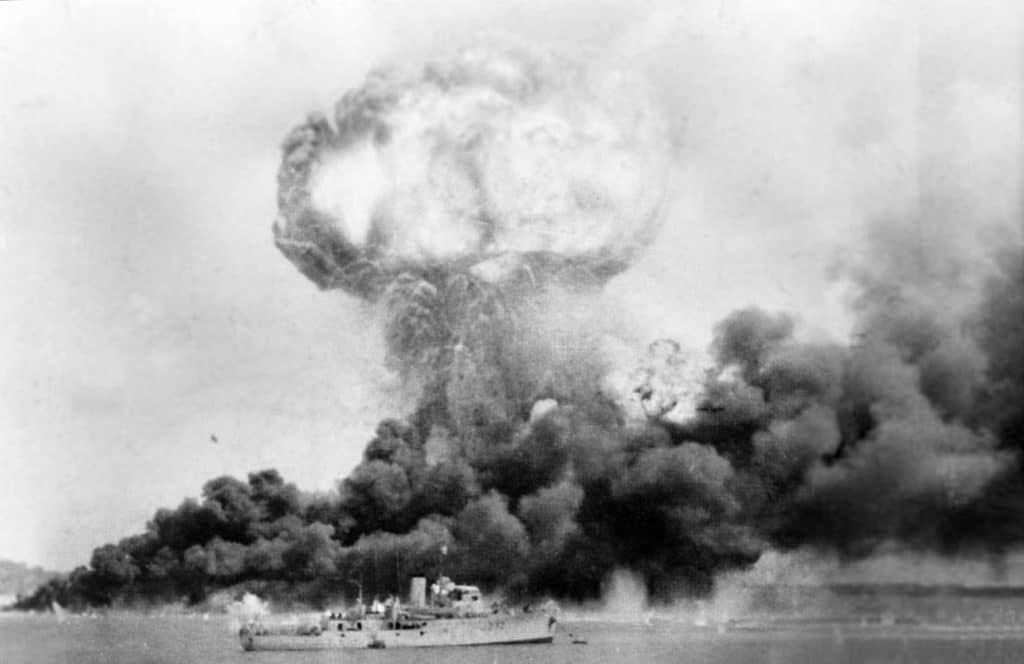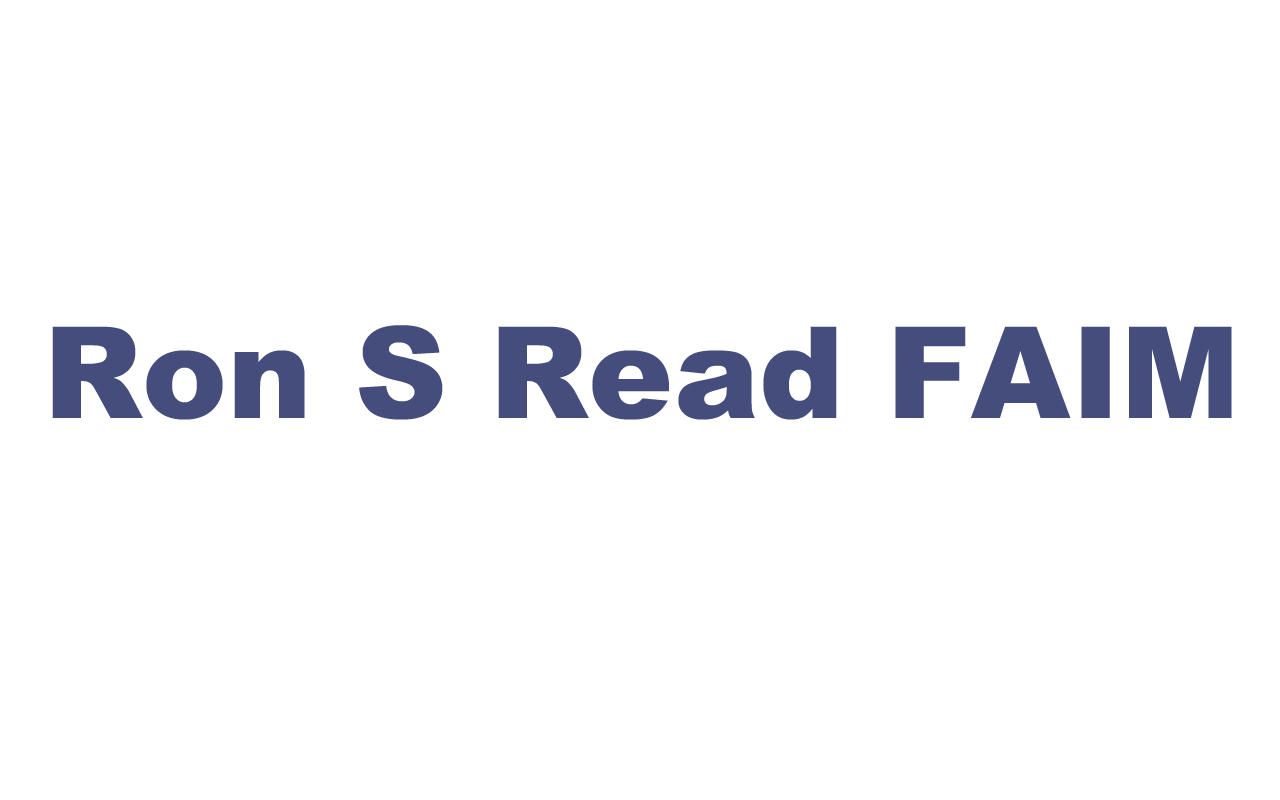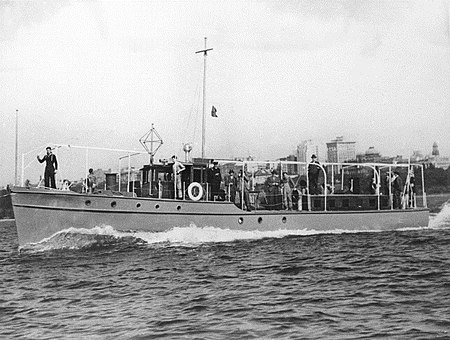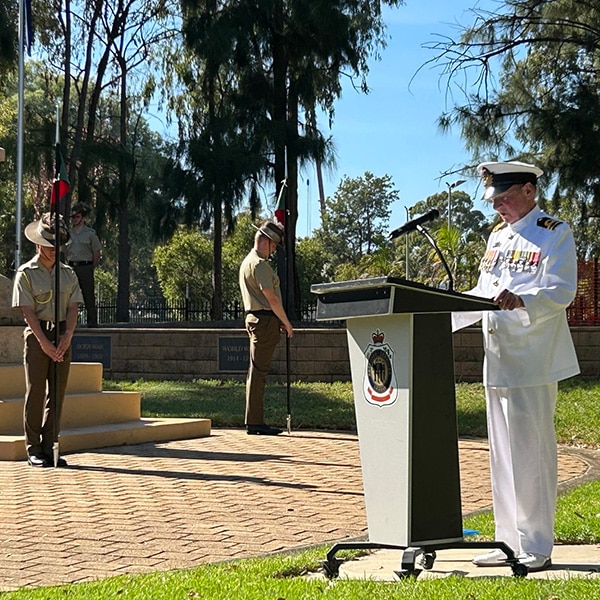
Background
Before I describe the attacks on Darwin let me take you back to 1930 when Japan attacked Russia, which developed into an on-going conflict lasting several years.
In 1932, Japan attacked, invaded and occupied Manchuria where they shortly thereafter installed a military led government. They then set about targeting the rest of China with the objective of occupying and governing it.
In 1937, Germany, Italy and Imperial Japan agreed to establish an alliance known as the Tri-Axis Alliance which when all parties signed on in 1940 became known as the Tripartite Pact.
Their mission or objective was territorial expansion by way of coup d`etat and by so doing they would not only control much of the East and the West, they would now have access to much of the world’s natural resources. Germany and Italy would control the West, and Imperial Japan would control the East and the Pacific.
But Great Britain and its Dominions, the United States and the Soviet Union opposed this, and so they too entered into an Alliance.
By 1937, the intensity of the Chinese resistance was drawing Japan into a very draining war throughout the vast reaches of China, and by 1940, the same was applying to their military operations in French Indo-China.
French Indo-China today is Cambodia, Laos and Vietnam.
During this time, Japan was ruled by the military and its senior figure was General Hideko Tojo – who also served as Prime Minister.
Now – it is important to note that by 1941 – Japan’s oil reserves were down to about six month’s supply!
Thus, when the Imperial Japanese Navy pressed for a southern strategy by way of attacking the Dutch East-Indies to secure their oil, and British Malaya for control of their vast rubber supplies, the Army readily agreed.
Subsequently, when the United States requested and later demanded that Japan END its war with China and French Indo-China – and they refused, U S President Roosevelt placed an oil and steel embargo on Japan.
Angered by this decision, the Japanese government had little choice but to react and react they did, devising a plan for an attack on Pearl Harbor where the US NAVY’s Pacific Fleet was based.
They would seek to DESTROY – or at least render the US Pacific Fleet inoperable – whereby they could further consolidate their territorial expansion, both to the East and to the South, and across the Pacific, unimpeded.
So, on the morning of Sunday, December 7, 1941, Japan attacked Pearl Harbor, which of-course immediately brought the United States into the war, a war which they hoped they could avoid.
Not dissimilar to Hitler’s Germany, Japan since the early 1930’s had sought to significantly expand it territories, and in order to do so, and to ensure sustainability, they needed access to natural resources – resources which they had always relied on other countries for supply.
- Japan’s expansion into SE Asia would deliver for them a raft of natural resources enabling self-sufficiency which included Oil, Rubber, Copper, Tin and Bauxite – for their agriculture – to name just a few
- It would further ensure they controlled all strategically located military positions in order to defend their expanding Empire
- It would also provide substantial economic growth, enabling them to realize their objective of becoming the SUPER POWER across Asia and the Pacific
- And lastly, they believed it would be the enabler to end European Colonial rule throughout the region – which they deeply resented.
So, when Japan attacked the United States with the objective of destroying their Pacific Fleet, they believed they would encounter little resistance while they simultaneously attacked and seized control of many territories across Indo-China and SE Asia – extending into the SW Pacific.
But they were wrong because the attack on Pearl Harbour brought the United States into the War immediately with vengeance, and as indicated the attack failed to destroy the US Pacific Fleet – most importantly not one single United States Navy aircraft carrier was damaged, and these carriers were to prove very costly to Japan later on in the war!
Why Darwin:

In short, Japan knew that Australia’s northern ports had to be neutralized and the islands above Australia had to be seized, so that they could then capture and occupy the Dutch East Indies and British Malaya unimpeded, and certainly without the threat of US Forces operating from northern Australia where their bombers were well within range of Java, Borneo and Malaya. Japan had conducted several air reconnaissance missions over Darwin, so they knew their targets which included – warships, supply ships and oil tankers in the harbor, harbor facilities and fuel installations, the infrastructure and the RAAF base where aircraft were tethered on the taxi-ways.
The Attackers:
The attackers were part of the same task force with the same leaders who started the Pacific War at Pearl Harbor just 74 days earlier.
And their supremacy was indisputable.
Japanese morale was indeed high, and for this, Commander Mitsuo FUCHIDA who had served as Japan’s Air Commander for several previous attacks, including Pearl Harbor was largely responsible.
By late January, the Japanese Fleet now in the Arafura Sea, comprised of:
The 36,000 Ton former battle cruisier Akagi, now converted to an aircraft carrier and the flagship of Admiral Chuichi NAGUMO, the Task Force Commander.
In addition to the Akagi was her sister ship, the Kaga.
On-board his flagship – the aircraft carrier Soyru was Rear Admiral Tamon YAMAGUCHI, one of Japan’s most esteemed commanding officers.
The carrier group consisted of 4 aircraft carriers with the Hiryu and there were also six heavy cruisers and nine destroyers.
This indeed was a very powerful fleet
An operational order had been prepared by Commander Minoru GENDA, calling for 188 carrier-borne aircraft. There were to be 36 fighters, 71 dive-bombers and 81 level-bombers.
The first attack would be followed by 54 land-based bombers from Ambon in the Celebes.
This Japanese combined fleet was led by Fleet Admiral Isoroku YAMAMOTO, who had expressed concerns over probable allied use of north-east Australia as a base from which to hinder Japanese seizure of the Dutch East Indies and so, he had advanced proposals for mounting an amphibious invasion – already with Japan’s military planners.
However, his amphibious invasion plans were severely rebuffed by both the Navy General Staff and the Army who shortly thereafter decided the best alternative would be a carrier air-strike to sink the shipping in the harbor, wreck the base and all military installations including all Darwin’s infrastructure.
The imminence of attack upon Darwin, whether by air or by way of an invasion force was recognized by the Commonwealth Government a few days after the Pearl Harbor attack.
By February 18, the population of Darwin had been reduced from over 5,000 to just over 2,000. This reduction occurred by way of government decree that women, children and the aged be evacuated by ship before Christmas 1941.
At this time also, and because the government was concerned about an air attack or an invasion, hundreds of soldiers were shipped in. Over the Christmas New Year period, they were engaged in erecting barbed wire entanglements along the beaches as well as the concrete machine gun emplacements being tested and armed.
The Attack:
At exactly 9:58 in the morning on February 19, 1942 Darwin came under attack from the air by a foreign power.
This is the day when war came to Australia.
188 aircraft took part in the first attack and 54 in the second attack.
At this moment 70 waterside workers were already on duty in the holds or alongside two ships at Darwin where 22 of them would be killed.
45 ships were moored in the harbor, stationery targets in which 172 lives would be lost, including 93 from the USS Peary which was sunk quickly following four direct hits.
The Hospital Ship, RAHS Manunda was hit badly wounding sixty crew and nurses and injuring a dozen more. The Post Office staff had been issued with stamps and money orders and were about to serve the public. Four would be soon dead.

Five women also to die, had fitted their earphones and were at work on the towns manually-operated telephone switchboard when the attack came.
At the Airport, 4 miles away, 10 American fighter pilots had just left for Java but had turned back due to inclement weather and as they landed in Darwin they were be shot to pieces.
Destruction and terror were such as to lead to a panic of people – hundreds and hundreds desperately fleeing on any moving vehicle they could, including on cattle trains and on bicycles.
Many of those who did not flee, died, including British, American, women and children, both black and white – whose bodies were at the bottom of the harbor, or soaking in oil drenched mud on the beaches or lying shattered in inadequate shelters.
Darwin on this day had become Australia’s Pearl Harbor
Casualties:
On the ships alone, including the US supply vessels, at last 172 were killed in the first air attack. Another 19 would die of wounds.
In addition, some 400 were wounded. When 52 deaths among civilians are added to the servicemen killed, the total comes to 243, but this has always been a contentious number – as many believed it was considerably more, and it likely was!
In the harbor that day but not damaged were 23 other vessels of various types including corvettes and sloops of the RAN.
By the time the bombers had turned back to their carriers, nine ships had been sunk and a further 15 had been damaged including the Hospital ship HMAHS Manunda where 60 crew and Nursers were seriously wounded.
20 Military aircraft were destroyed and Darwin’s infrastructure was in ruins.
The destruction was brought by the Japanese Navy, swiftly and efficiently as it had been to Pearl Harbour just 74 days earlier.
Were there any warnings:
YES – According to evidence presented to Justice Lowe KC who conducted the Royal Commission into this attack, two days before February 19, Mr. David Ross – Australia’s Consul in Dili, received word from Lieutenant Manuel Pires, the Portuguese Administrator of Baucau, 80 miles east of Dili, about the increasing Japanese air movements in the area.
Ross had daily contact with the Department of Civil Aviation radio at Darwin through a Portuguese station in Dili maned by Mr. Patricio da Luz. He sent several coded signals about Japanese flights, further stating that he suspected the presence of an aircraft carrier in the area.
Events were to prove him incorrect as there were FOUR aircraft carriers.
Rather than take the defensive action, the RAAF set out to try to prove the reliability of his information.
Earlier, Ross received a signal from Darwin asking him to specify the type of aircraft he had reported and also “what makes you think there is a carrier in the area”?
He couldn’t reply because by now Darwin’s radio was destroyed.
The next day Ross was captured by the Japanese army on February 20.
Upon repatriation to Darwin over a year later, Ross asked the senior RAAF Officer, Group Captain Scherger, at the time he made his reports why he had not acted?
The RAAF officer told him he had never seen his reports!
RAAF intelligence were trying to prove them rather than acting and furthermore they were unaware of the link existing between Darwin Civil Aviation radio and the Portuguese Timor. Mr. E G Betts, the Departments Radio Inspector later said:
“the RAAF were extremely interested in Dili even in the pre-war period and I find it very difficult to understand that these signals from Mr. da Luz in Dili were not passed to Group Captain Scherger. Indeed, it is incomprehensible, when additional factors are considered – that an immediate alarm was never given”
Furthermore, when separate warnings were given from Melville and Bathurst Islands – warnings that might have given them half an hour to prepare – they too, were tragically ignored.
Nonetheless, with the size of Darwin at the time, the IJN Commander who planned the mission later said “It was like taking a sledge hammer to crack an egg”!
The IJN went on the conduct a further 96 air-attacks on our northern cities and towns including Townsville, Mossman and Cape Horn in QLD, Drysdale, Katherine, Millingimbi and Port Patterson in the NT, and Broome, Derby, Onslow, Wyndham, Port Hedland and Exmouth in WA.
Their last air-attack on Australian soil came when IJN Bombers attacked the power house at Adelaide River on 12 November 1943.




